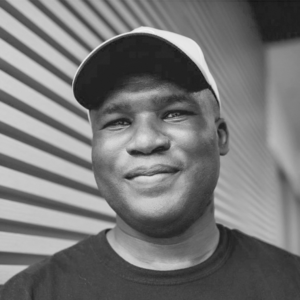March 29, 2021
Investment in Supply Chain Tech is Gaining Momentum in 2021
In this article:
- Interest in supply chain technologies has continued to increase in the past year.
- Investors’ focus on solving problems—both business problems and sustainability problems—has remained.
- We’re starting to see a hybrid of venture capital (VC) and private equity (PE) enter the investment space, backed by deep supply chain expertise.
There’s a triple butterfly effect occurring in 2021 that is having an impact on the investment fund landscape. It’s a convergence of the increasing concern over climate change, the maturation of digital infrastructure and capabilities, and the urgent need to improve visibility in supply chain.
Concern over climate change has not only inspired shifts in consumer behavior and new regulations around the world, investors have started financing solutions.
Digital infrastructure has become faster, more available, more reliable and has seen the advent of cloud computing, mobile devices, IoT, edge computing, and up-and-coming technologies like machine learning.
The need to improve visibility in supply chain has grown as supply chains become more complex and globally distributed than ever before. Disruptions like the effects from the COVID-19 pandemic have underscored the need for resiliency. The net result is increased appetite for innovation, and an increase in interest in supply chain technologies from investment funds.
In the summer of 2020, we confirmed with three investors that there was an upswing in interest in supply chain startups. Nine months later, the interest hasn’t abated—if anything, it has grown.

The Rising Numbers of Supply Chain Startups and Interested Investors

Dave Anderson of Supply Chain Ventures
Dave Anderson and business partner Dan Dershem lead Supply Chain Ventures LLC, an early-stage and angel venture capital firm. Both Dave and Dan have decades of experience in various facets of technology solutions for supply chain. Anderson, in particular, was instrumental in building the $2B supply chain practice at the Accenture consultancy.
In our 2020 article, he mentioned that he and Dershem were seeing about 300 supply chain startups per year.
Recently Anderson commented that, “The pace is about the same, although we have become more aggressive with investing in Europe, and so are getting more deal flow from Europe and the Middle East. Asia is hot for logistics startups, but we do not invest there.”
As one of the most experienced and successful supply chain funds, Anderson and Dershem field calls from other investment firms looking for expert guidance.
“The VCs and PEs that call us are relying on our experience and most of the time do not have supply chain experts on staff,” confirmed Anderson.
He notes that other firms are starting to dive in rather than simply exploring supply chain investments. “Over the past two years, over 50 VC and PE guys have contacted us about getting involved in supply chain investing,” he said. “Some—perhaps five to ten—are quite serious and we speak every month or so (more when we have a deal in play); essentially sharing opportunities. Most are just looking for a deal or two to add to their portfolio.”
He doesn’t think that the kinds of startups pitching to investors have changed in the last nine months. “That’s a tough question—I don’t think so, although we are seeing a lot more ecommerce-oriented companies, either marketplaces or fulfillment providers, than in the past.”

Peter Hove Hildebrandt of Project Aviato

Sune Stilling of Project Aviato
Meanwhile, ex-Maersk growth and digital transformation leaders Peter Hove Hildebrandt and Sune Stilling have started Project Aviato, a fund dedicated specifically to supply chain investments.
After 30 months at Maersk Growth, says Stilling, “We made 23 first-round financing supply chain startups in the USA and Europe and an additional ten financing rounds within those companies. In the last three years we’ve seen about a hundred global supply chain startups per month.”
As to why Stilling, Hove Hildebrandt, and partner Peter Friis Ovesen started Project Aviato, Stilling said, “We want to be part of this, and let me be a little less humble about it: we want to be at the center of this, both because of the impact this is going to have on the world and on an industry that we are passionate about.”
Hove Hildebrandt commented, “One of the things that we keep seeing is that colossal amount of waste that still sits in the system. There are true problems to be solved. The world has built an industry where there is no clear accountability of the end-to-end supply chain. Everyone has their own way of optimizing along the way which always results in a bad outcome.”
Leaning into Sustainability

Brian Laung Aoaeh of REFASHIOND
There are also firms that are focusing on sustainable solutions for supply chain.
Early-stage VC firm REFASHIOND, led by Brian Laung Aoaeh and Lisa Morales-Hellebo, have launched a $10 million early stage Rolling Fund™ on AngelList.
Social and environmental benefits are two of the main motivations behind REFASHIOND. Because everything in the world relies on supply chains, fixing the inefficiencies in supply chains benefits people and the planet.
In his recent article, “#SupplyChainTech: What is Supply Chain Technology, and Why is it the Biggest Investment Opportunity of Our Lifetime?”, Aoaeh wrote, “#SupplyChainTech matters because it plays a central and critical role in the world’s ability to confront the challenge posed by the ongoing climate crisis. No other area of technology and innovation matters as much as #SupplyChainTech.”

Daniel Robin of In3 Group
There are other firms who are looking at financing the companies who want to tackle sustainability problems. Daniel Robin is a founder and senior partner of In3 Group, which invests in sustainability projects. We asked him if he’s seen an increase in the number of cleantech startups approaching his firm since July 2020.
“Oh yeah, a serious uptick—it’s been crazy, actually. We’ve had to begin filtering out the less-obviously qualified opportunities as a matter of sanity. This increase is a good thing in the longer run.”
He agrees that interest has grown since summer 2020.
“Yes, there’s definitely much more interest in sustainability-related solutions in the months since we spoke,” said Daniel. “The big controversy, in my view, are the two divergent schools of thought about the right strategies for solving the climate crisis, in part fueled by Bill Gates’ recent book. He doesn’t see outside the lens of technology and thinks that’s going to solve everything. That’s dangerous and simply wrong-headed in several areas.”
Daniel and others point out that working with nature can do more. Planting trees, for example, is the most cost effective way to pull carbon out of the atmosphere.
The Goldilocks Zone for SC Investments
There are several challenges in investing in supply chain solutions, and one of them is how investment firms are structured.
Given how large and complex supply chain can be, and that any numbers related to supply chain tend to scale rapidly, supply chain startups don’t tend to hit the typical bullseye of either venture capital or private equity.
The supply chain function in general is established. But most of the innovative tech solutions for supply chain are smaller companies, and private equity firms only invest in the mature, large scale companies. Venture capital, on the other hand, does understand small tech companies, but doesn’t play with the big firms.
What is starting to emerge, however, is a hybrid of PE and VC, from which the startup innovation universe can benefit. Project Aviato, with its connections, is shaping up to be one of those perfect fit investment companies.
Supply Chain Backgrounds Make the Difference
Most supply chain managers recognize that finding a solution that solves all the visibility problems in supply chain won’t happen quickly. Supply chains are just too complex. As Stilling puts it, “Somebody might create this wonderful tech solution but there is also physical stuff that has to move. Marrying those two worlds is a really difficult challenge for the industry as a whole.”
What often makes the difference in outcome is expertise in supply chain management, the kind that Anderson, Hove Hildebrandt, and Stilling have. Or, in Aoaeh’s case, the willingness to spend the better part of a decade “digging into things”.
Progress has started to happen, because as the saying goes, the first step in fixing the problem is recognizing that there is a problem in the first place. What we’ve learned is that innovators and investors are starting to pay attention. With lots of good thinking and a lot of luck, hopefully better solutions are on the horizon.
Learn more:
- Read Daniel Robin’s article on profitable and well-proven, nature-based climate solutions we already have >
- Find out more about REFASHIOND Ventures >
